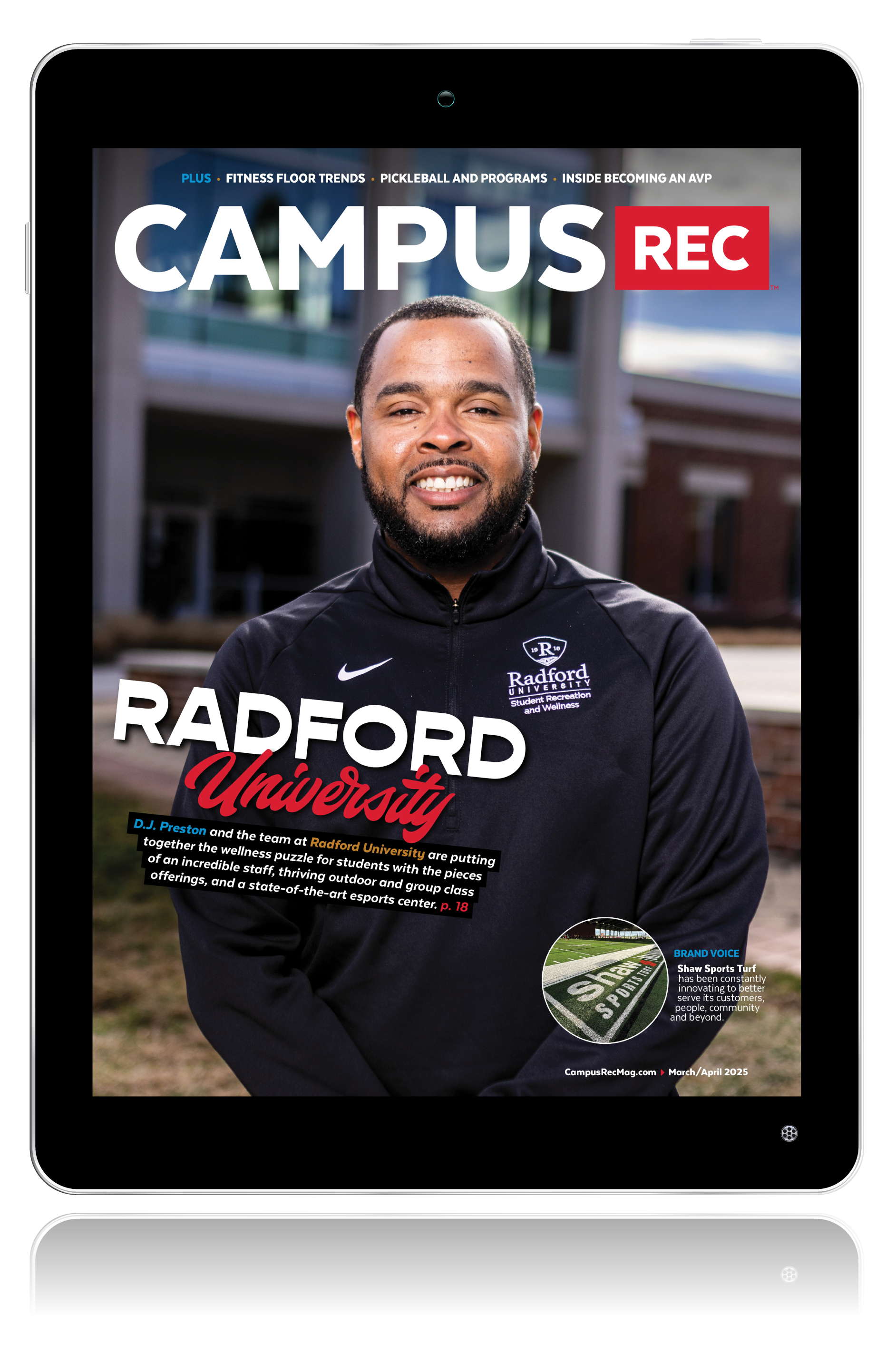When considering a renovation, it’s easy to focus on the to-do list rather than the not to-do. Below, three campus rec professionals share the “don’ts” of renovating they’ve gleaned from their own experiences.
University of Central Arkansas HPER Center
The HPER originally opened in November 2000 as a 72,0000-square-foot recreation center. In 2012, the process for an extensive expansion and renovation project began, ending in November 2014. A few of the changes included a 10,000-square-foot weight room, a six-lane, 25-yard lap pool, and windows around the indoor track to provide an open feel.
Here are some don’ts from Ary Servedio, Central Arkansas’ senior associate director of campus recreation :
- Make sure you do your homework in advance, and know exactly what you and your stakeholders want and need, and stick to it.
- Technology can be a blessing or a curse.
- Keep track of the blueprints.
- When you have a budget, you know how much you have – price out everything as well as you can.
- Don’t be afraid to speak up.
The University of Michigan
The University of Michigan North Campus Recreation Building previously underwent a 16-month renovation, including a gender-inclusive locker room and restroom, new space for group exercise classes, and a resurfaced running track.
The Intramural Sports Building also previously underwent a 17-month renovation that included 200 new pieces of cardio and strength equipment, racquetball courts, and spacious social lounges.
Additionally, the Central Campus Recreational Building is scheduled to undergo a renovation beginning in November 2020, expected to be completed in Fall 2022.
Here are some don’ts from Mike Widen, Michigan’s director of recreational sports:
- Don’t be the only one to provide input on your renovations. Connect with students and members to understand what things would be important to them and what they want to experience in a renovated building.
- Don’t limit getting feedback just to the students and members who use the facility. Talk to those who aren’t using and see what the barriers are for their participation. Understanding those barriers might allow you to make changes that drive participation/use for those who you don’t currently serve.
- Don’t forget about infrastructure needs in your budget. Aging buildings have a lot of need for infrastructure upgrades. Many of those upgrades you can do in a renovation can have a significant impact on your project.
- Don’t expect everything to go exactly as you planned. When you renovate an existing facility, there are always things that come up you don’t plan for. Be ready to make adjustments as you go through the process. Accept those challenges as just part of the process.
- Don’t think that you’ll be able to solve every issue with your renovation. Every project has a budget limit and those limits, most times, don’t allow you to address every issue within a facility. Prioritize the things that are most important and understand the costs to make those changes.
- Don’t forget to enjoy all the steps along the way. Renovations of buildings don’t happen very often. Many recreation professionals go their entire careers without having the opportunity to be involved in a renovation. Enjoy the process.
The University of Tennessee Health Science Center (UTHSC) Campus Recreation Fitness Center
The UTHSC Campus Recreation Fitness Center completed a three-phase renovation in November 2018, including new weight room equipment, natural lighting, and Mondo flooring.
Here are some don’ts from J. Lee Taylor, the Tennessee Health Science Center’s director of campus recreation:
- Don’t paint the walls after the floor is installed – paint first.
- Don’t assume new equipment height will fit the ceiling height – measure first.
- Don’t forget to include your safety department when preplanning.











Thanks for the great post, enjoyed it once again, Ill give
this a share.